Swarm Reverb is more of Minimal Audio at its best
Can software darlings Minimal Audio stand out among a horde of similar reverb plugins?
Minimal Audio Swarm Reverb
Review Overview
Our rating
8
Our verdict
⊕ Intuitive controls and visual feedback
⊕ Superb sound
⊖ Needs more general-use presets
⊖ Longer reverbs can tax the CPU
$49/from $10 per month as part of Current All Access subscription, minimal.audio
It takes a lot to stand out from the software developer crowd these days, thanks to myriad audio companies entering the plugin fray. Minimal Audio has made a name for itself with a clutch of well-received effects plugins and one synthesizer. Minimal is steadily building up a collection of music production gems, with distortion, delay, compression, and EQ plugins already represented. You can tick reverb off the list now as well, as Minimal Audio has just dropped the Swarm Reverb.
- READ MORE: Best free plugins and freeware of the month
With a similar aesthetic to its other software and a welcome focus on sound design, it’s sure to be a hit with the Minimal Audio faithful. The question, however, is whether Swarm Reverb offers enough to get the rest of us to open our wallets.
Swarm breaks out
If Swarm Reverb looks familiar, it should. It first debuted as part of the effects suite in Current, Minimal Audio’s flagship synthesizer. Current is a stellar instrument. It’s a shame that the controversy surrounding the company’s subscription-based release strategy overshadowed its merits though. Now that things have calmed down (and the synth is available to purchase outright or as part of the Current All Access subscription plan), we can appreciate it for what it is: a solid, great-sounding synth.
Part of Current’s appeal is the effects section. Minimal Audio made its name with effects like Rift, after all, so it makes sense that any instrument bearing the same name would excel in this department; and one that especially piqued our interest was the Swarm Reverb.
As an algorithmic reverb, Swarm refreshingly isn’t an attempted emulation of hardware. The unique selling point is the way that it separates early and late reflection sections, offering a degree of control over the reverb’s constituent parts that is comprehensive without being overwhelming. Favour the early reflections and you almost have a delay. Go the other way for cloudy, dense reverbs. Blend them together for the best of both worlds. This all results in a plugin that excels at both standard reverb jobs — whack it on the vocal bus and you’re good to go — as well as sound design.
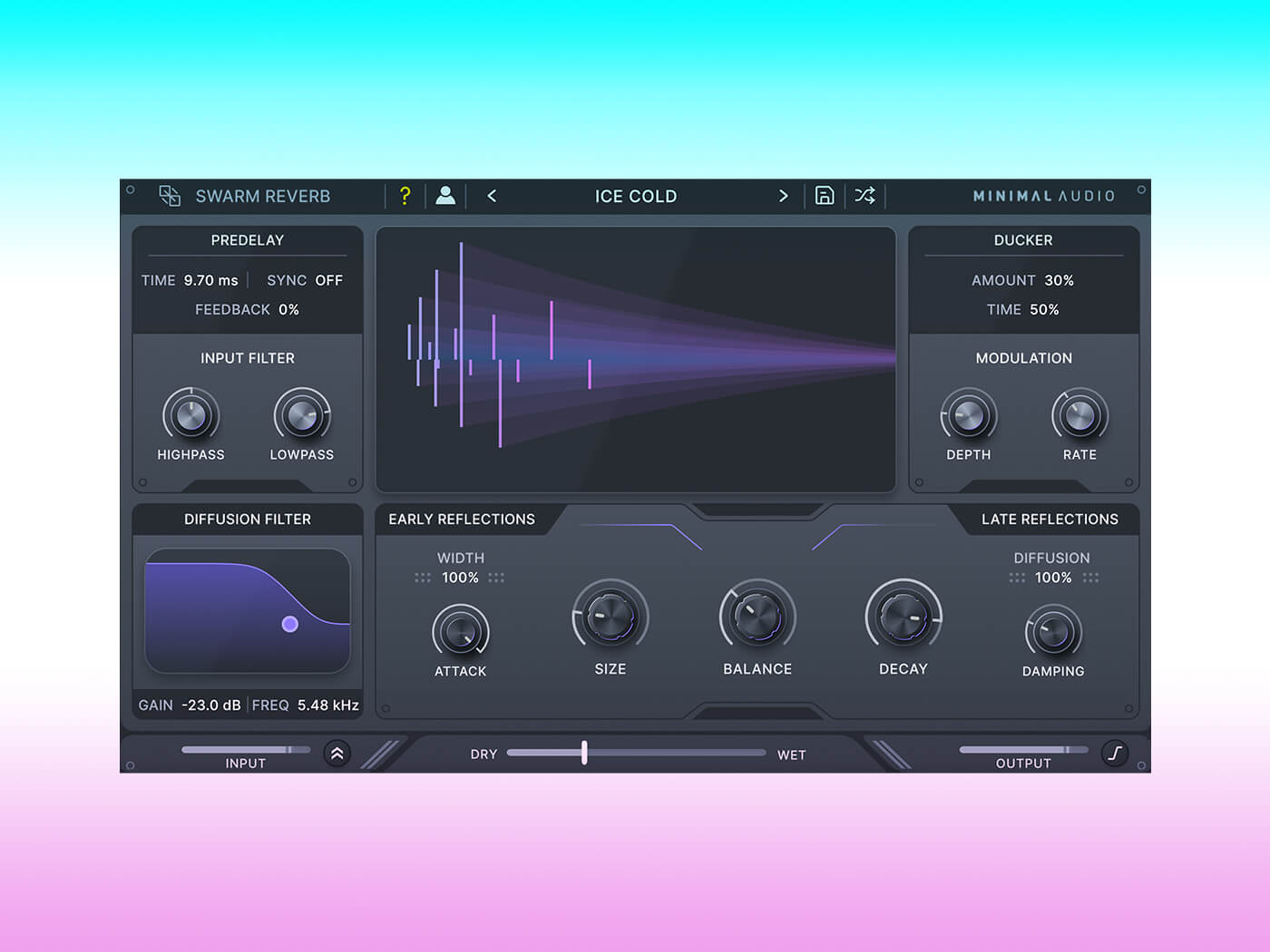
Looks can be deceiving
At first blush, Swarm Reverb looks fairly basic. The lack of controls, however, belies the degree of control that you actually have over the signal. Kudos to Minimal Audio, then, for creating an effects plugin that is simple to operate but still provides oodles of adjustability.
As mentioned, Swarm Reverb separates things into early and late reflections. Early reflections are the first few reflected sounds that return to your ears after an initial burst of sound, while late reflections are the wash that comes after; the cloud of sound that decays into silence. The two are represented by a graphic in the centre of the user interface.
Purple horizontal lines display the early reflections while the late ones are depicted as transparent light tapering towards the right. Altering the controls moves the bars and light, offering valuable visual feedback.
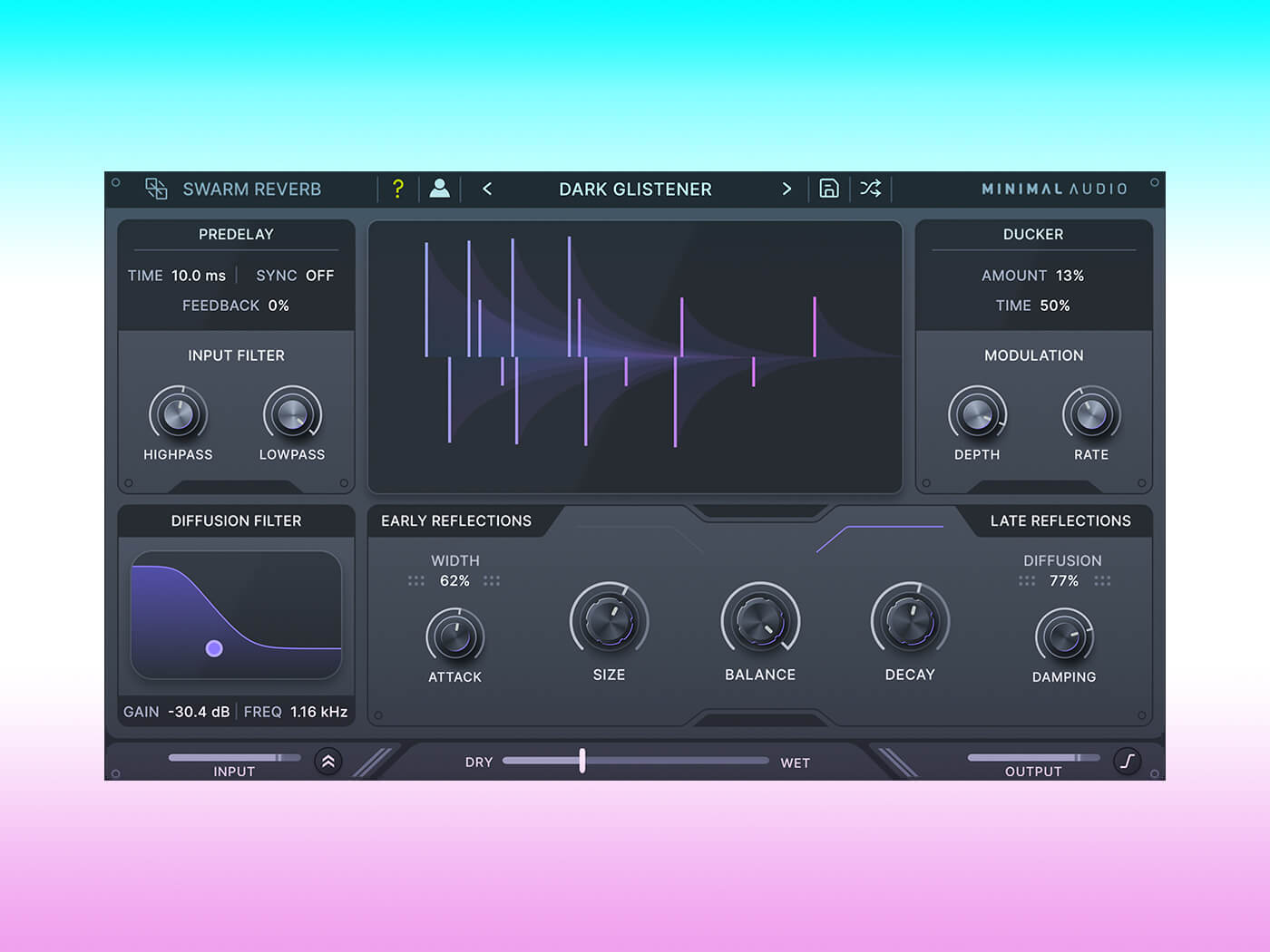
Take control
Swarm provides controls for pretty much anything worth tweaking. There’s pre-delay (the short pause between the source sound and the onset of the reverb), with the convenient ability to make adjustments in either milliseconds or beat increments synced to DAW tempo. Rhythmic effects, ahoy. There’s even a feedback setting to create delay-like effects from pre-delay echoes.
There’s plenty of unique and convenient control over other aspects as well, such as attack for early reflections, effectively giving you amplitude envelope control over them. Combine this with Size to set the dimensions of the virtual room you’re creating. Use the width percentage to push the reverb effect into the stereo spectrum, plus modulation controls to set the whole thing in motion.
On the late reflections side, you can adjust decay, damping and the amount of diffusion plus the balance between early and late sections.
There’s more – including a high pass and low pass input filter, as well as a graphic-based diffusion output filter. Handy to have is the ducker, which is useful for vocals and drums. Interestingly, you can uncouple the input gain from the volume of the dry signal, which helps when automating effects. Wrapping things up are a dedicated dry/wet slider plus a soft clipper on the output with two modes.
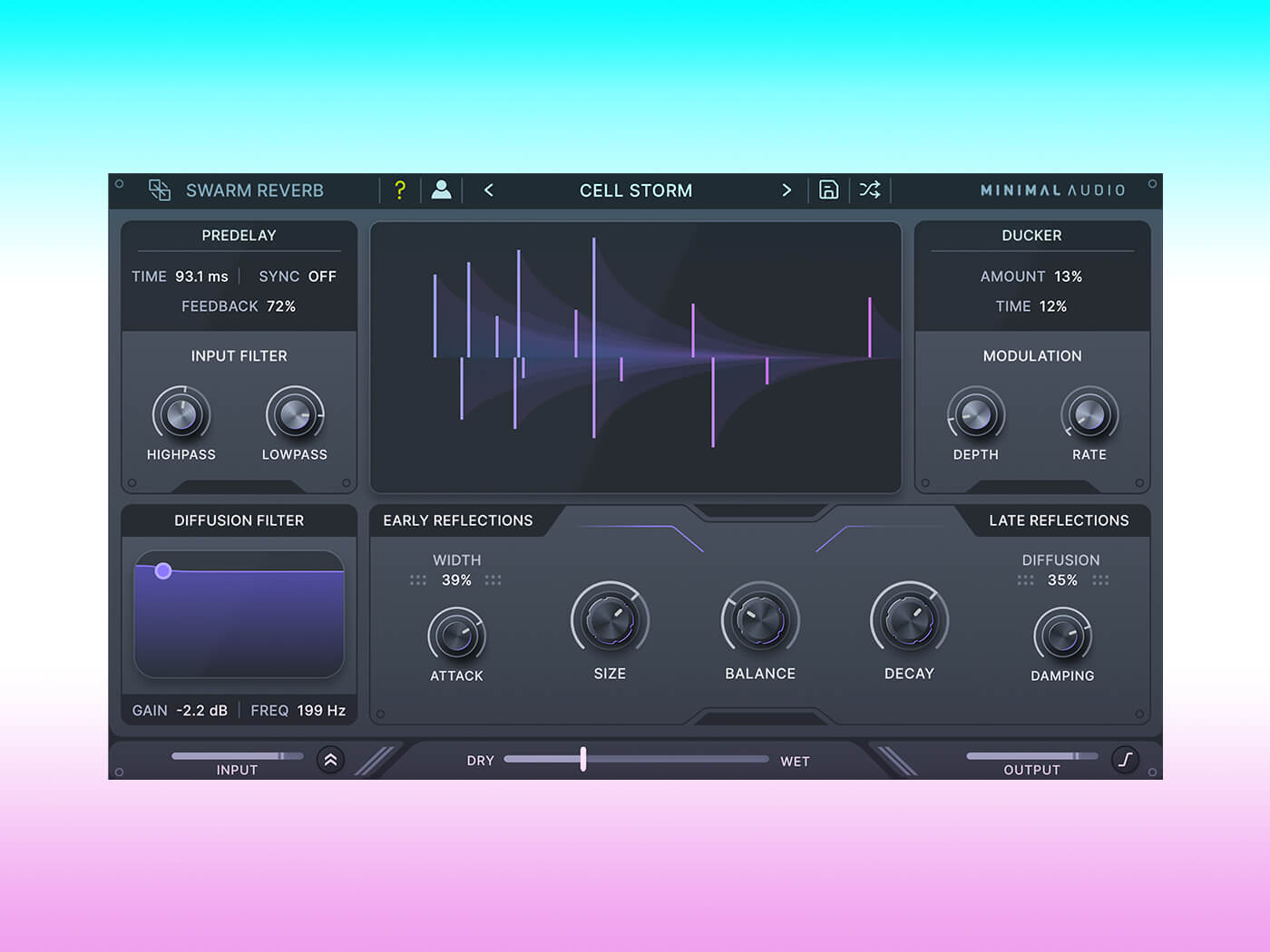
Killer verbs on the swarm
With controls where you need them, we find Swarm Reverb allows us to craft pretty much any kind of reverberation a track requires. It can do long, yes, with effectively infinite tails possible (just watch your CPU use, as long tails can really tax the processor). It also excels at short verbs, making Swarm our new go-to for rooms. With its time-synced pre-delay and ducker parameters, the plugin is perfect not only for single drum hits but even on the bus. Wild or controlled, sober or psychedelic, Swarm Reverb can do it all.
And, with the immediate visual feedback, sound design is a breeze. Swarm Reverb may be the most intuitive reverb we’ve ever used.
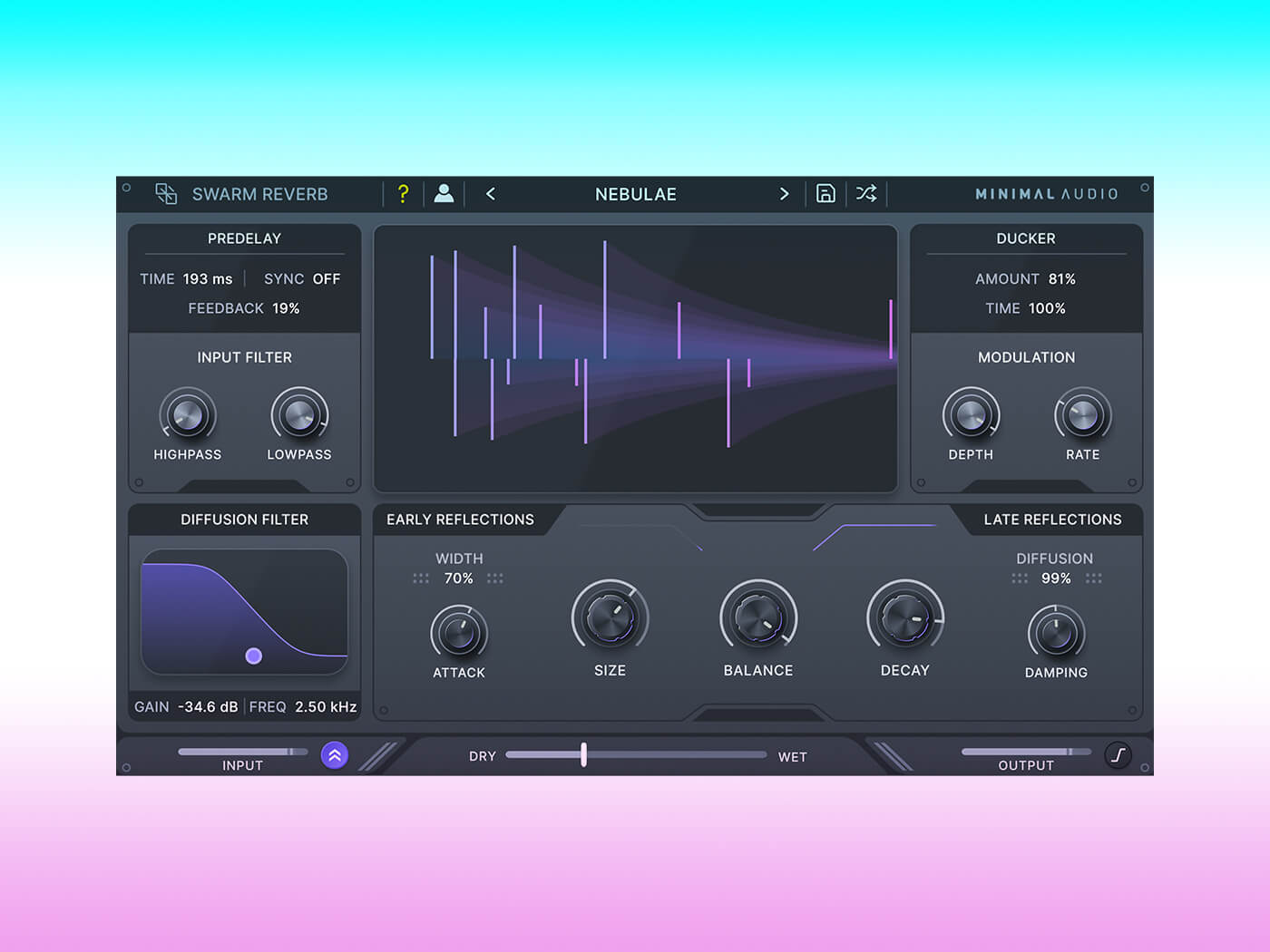
Intuitive and great-sounding
Swarm Reverb is not perfect. The presets are fun but many of them tend towards the freaky-deaky sound design type — it could do with a few more general use presets. And while we like the random preset button, which pulls a preset out by chance, a random button for the general settings could be fun too. We also noticed a few small bugs, such as the slight resizing of sliders and knobs while in motion but hopefully this will be fixed in a future update.
These are just quibbles, though. Minimal Audio’s Swarm Reverb is an intuitive, great-sounding and ultimately fun-to-use reverberation plugin. By separating early and late reflections, it provides a unique degree of control, excelling at both general purpose and sound design tasks and it looks great doing it. And we haven’t even mentioned the price. At $49, it’s practically a done deal. Minimal Audio has done it again.
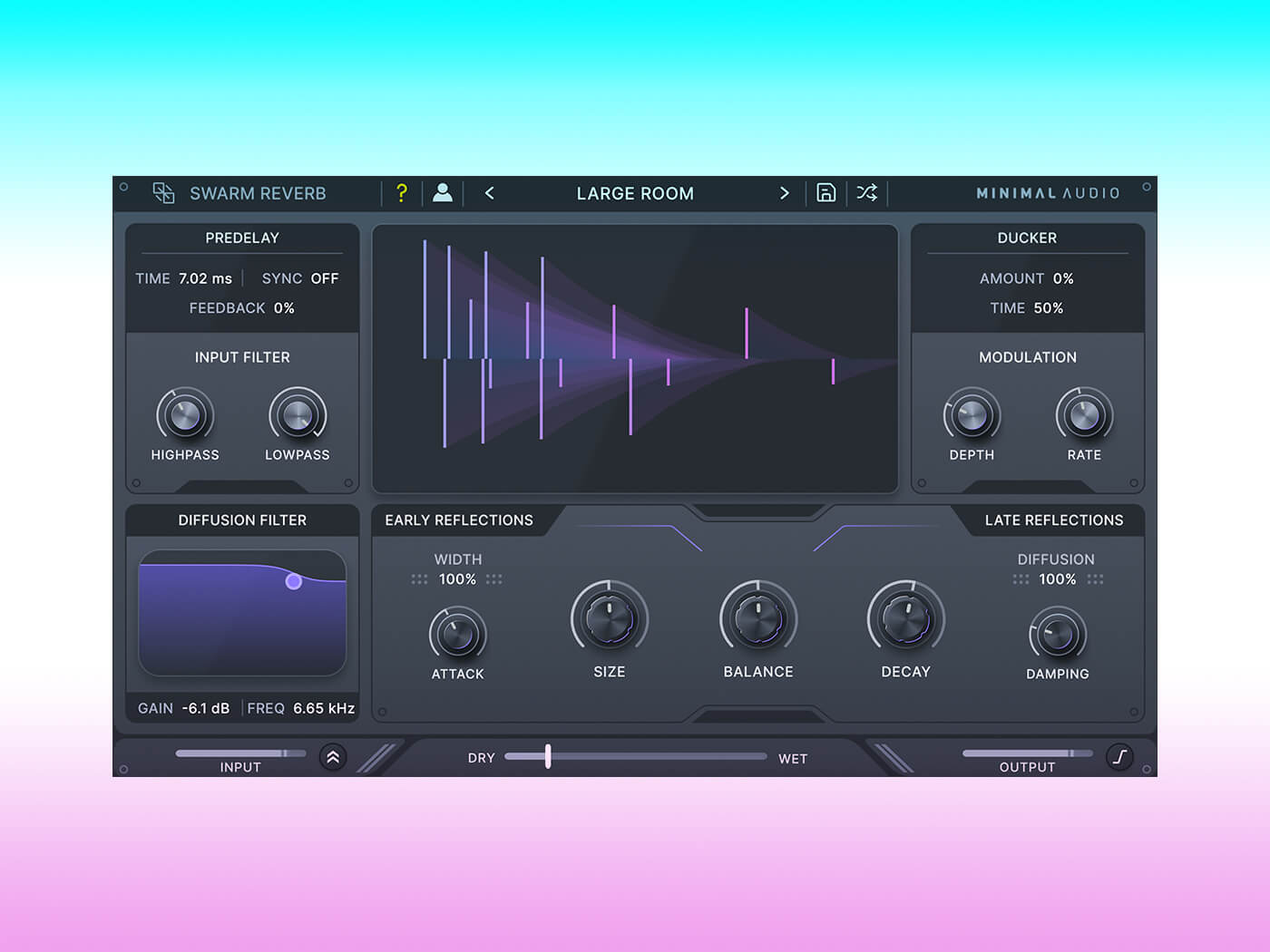
Key features
- VST/VST3/AU/AAX plugin
- Algorithmic reverb that splits the signal into early and late reflection sections
- Syncable pre-delay
- Input and diffusion filters
- Ducker
- Modulation
- Control attack, size and width of early reflections
- Vary decay, damping and amount of diffusion of late reflections
- Adjust balance between early and late reflections
- Dry/wet slider, input and output controls
- Soft clip limiter
- Also available as part of the Current All Access subscription plan